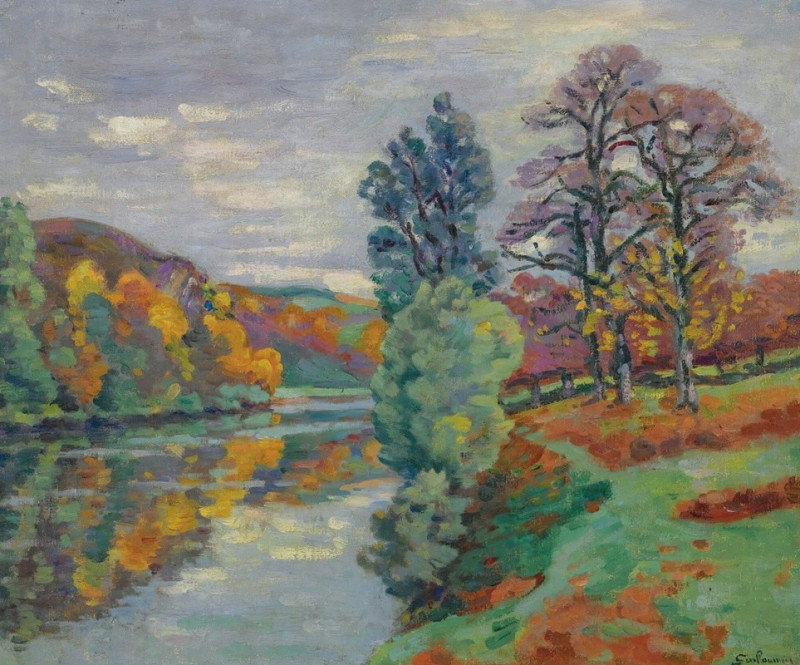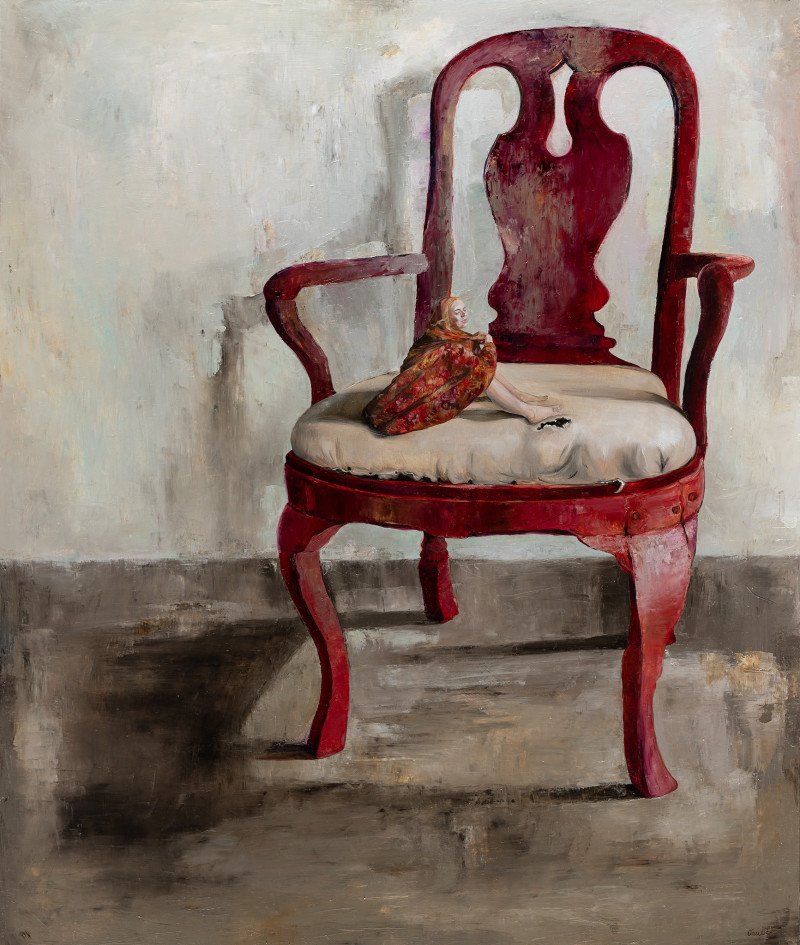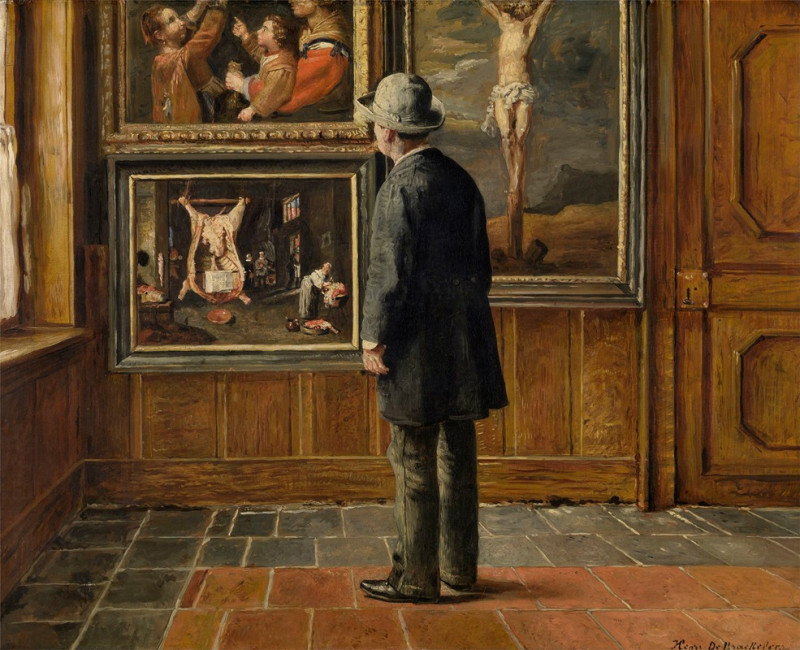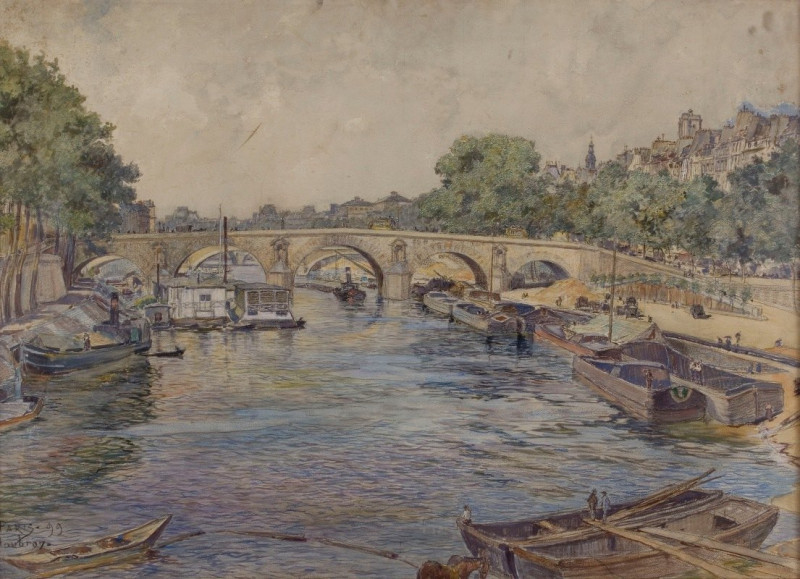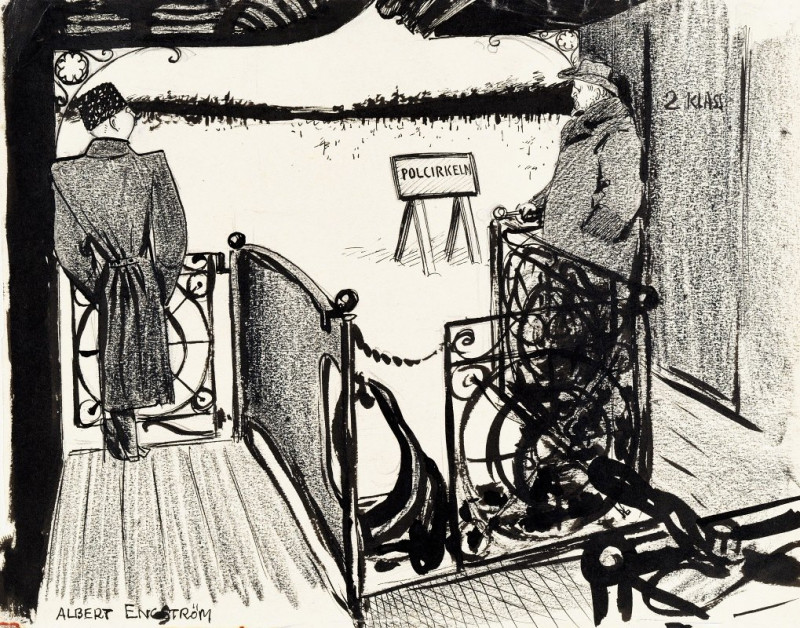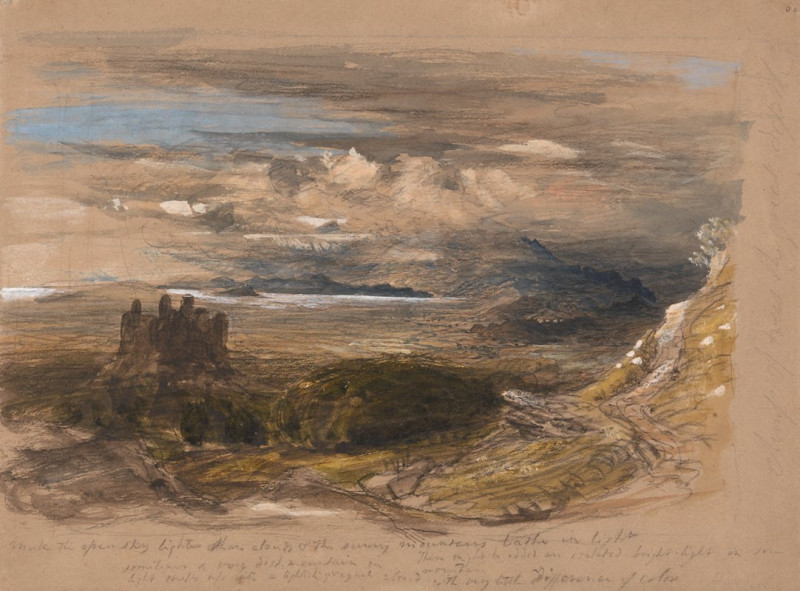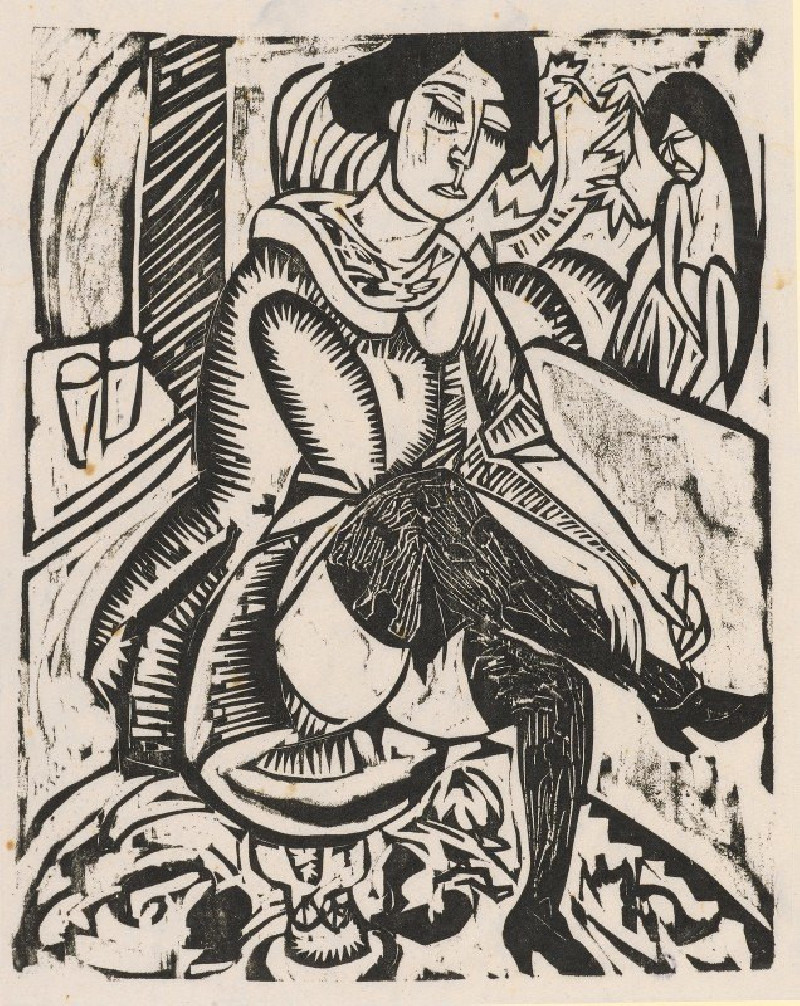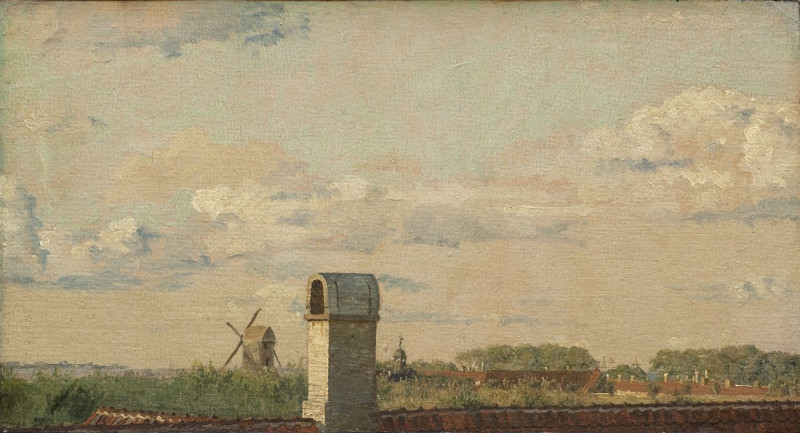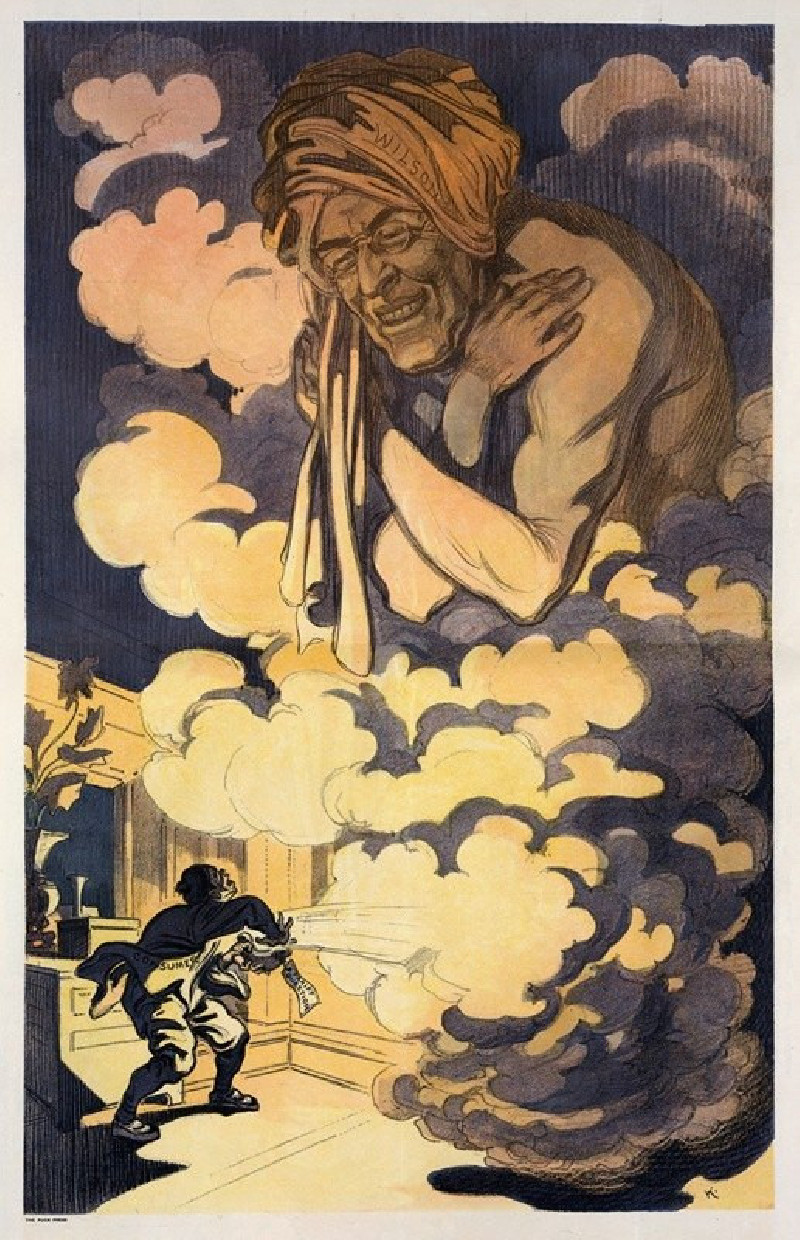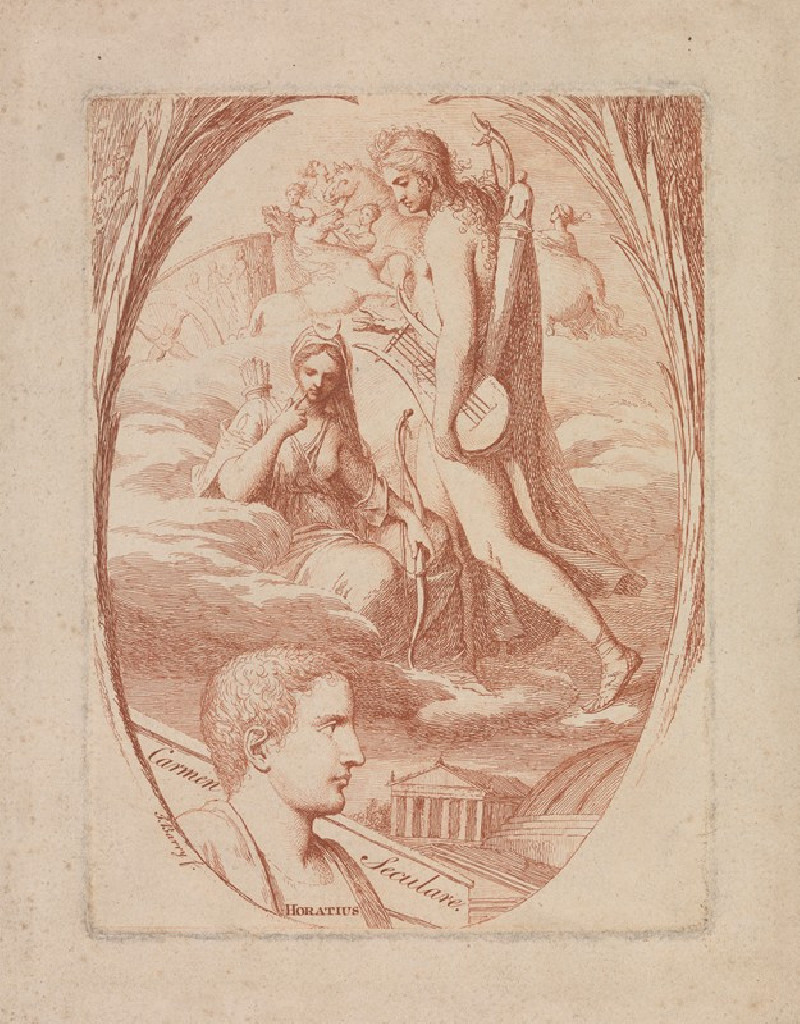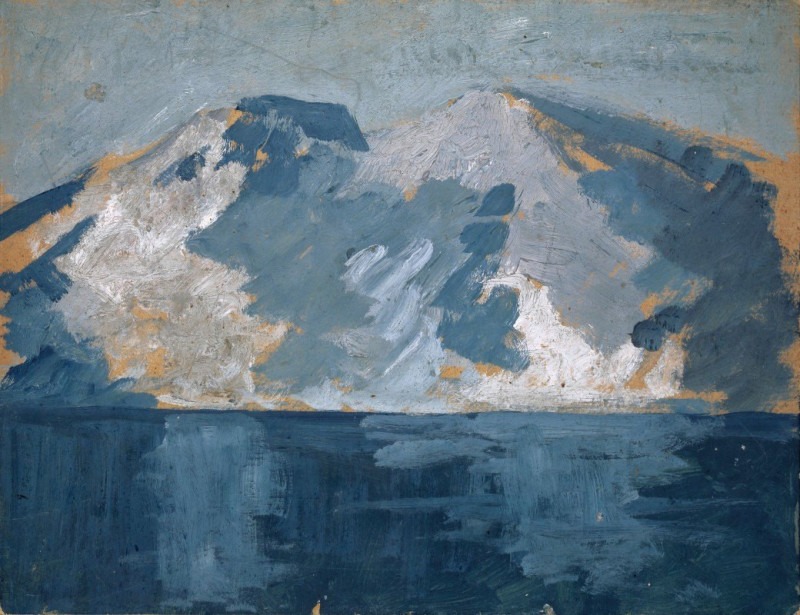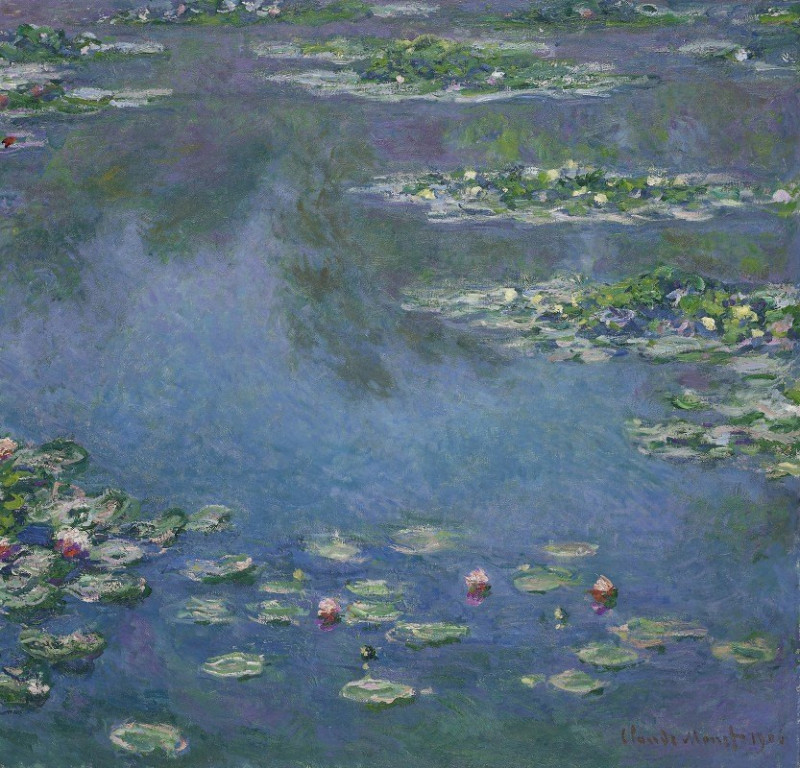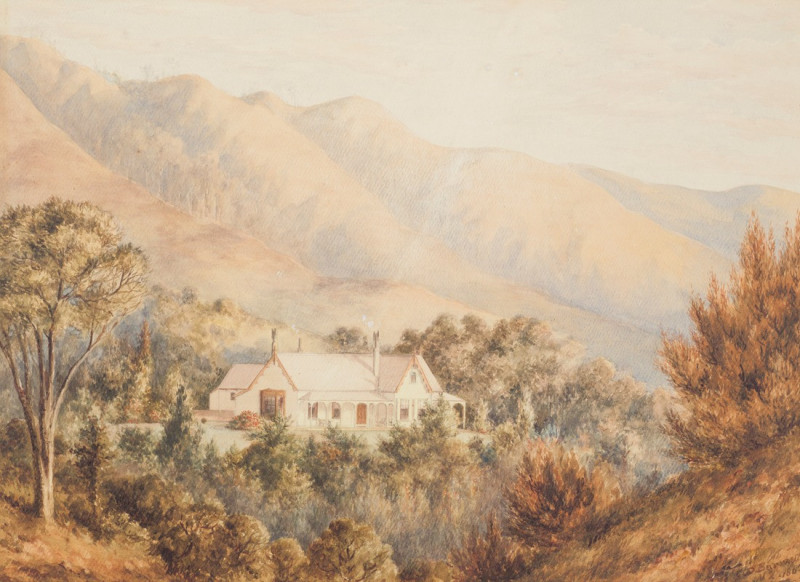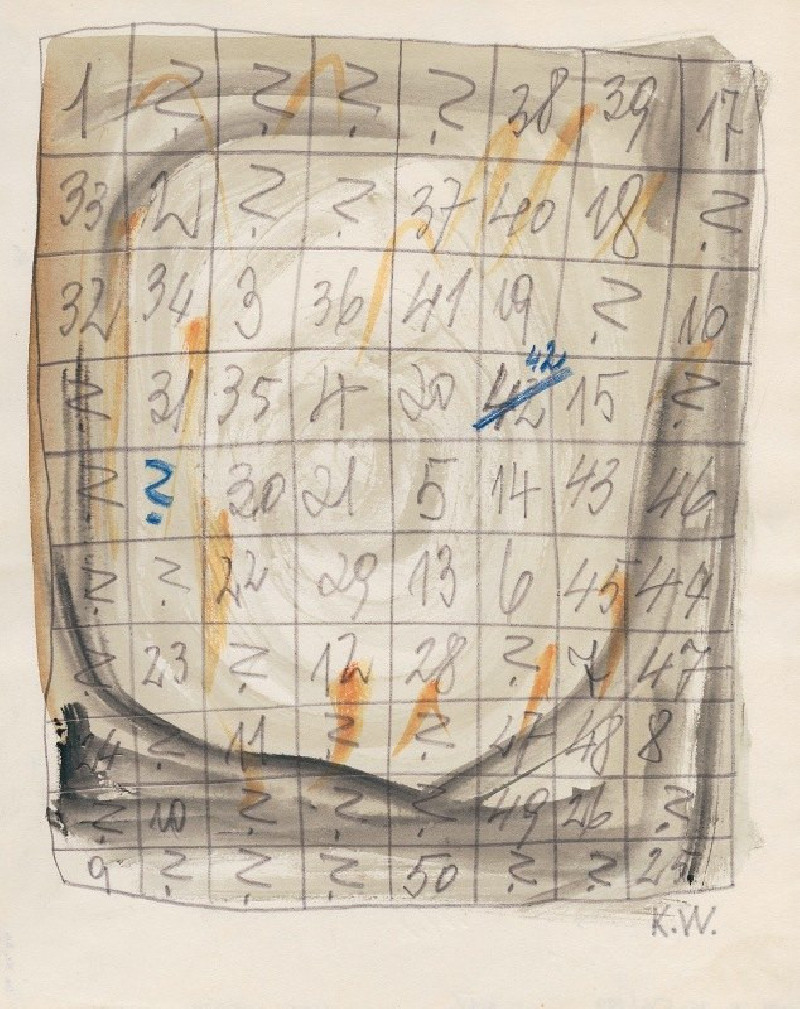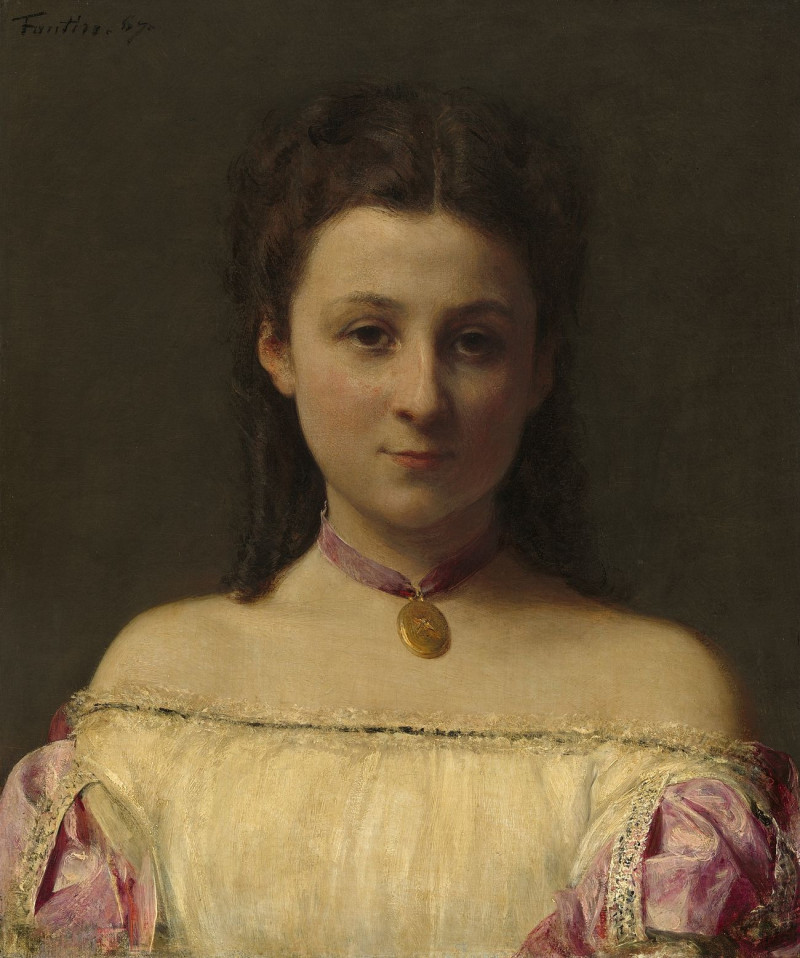Ohne Titel II (1942)
Technique: Giclée quality print
Recommended by our customers
More about this artwork
Karl Wiener's "Ohne Titel II," crafted in 1942, is a compelling piece that engages the viewer with its intense expression and chaotic composition. This charcoal on paper captures a scene brimming with dynamic energy and a sense of unrest. At the center of the composition stands a figure, arms raised, one hand dramatically extended upwards as if in a plea or to grasp something beyond reach. The figure’s facial expression is harrowingly dramatic, conveying anguish or profound bewilderment.Surrounding the figure is a tumultuous swirl of abstract and geometric forms, suggestive perhaps of debris or the disarray of the external world. The use of chaotic lines and overlapping shapes around the central figure might symbolize the turmoil and confusion engulfing the individual. This could be an artistic reflection on the era's socio-political upheaval, echoing the broader turmoil of the 1940s' global landscapes.The monochromatic palette adds to the work's gravitas and highlights Wiener's skill with shading and texture, making "Ohne Titel II" not just a visual, but an emotional experience.
Delivery
Reproductions are made to order and take 5 to 7 working days.
We send them out by courier and delivery takes another two working days.
If you need a reproduction sooner, please contact us - we can usually find a solution and produce it a little faster.
If you don't want to pay for postage, you can pick up your paintings at our galleries in Kaunas or Vilnius.
Returns
Yes, reproductions can be returned.
If you have any doubts more than 30 days after the date of purchase, please contact us - we will take the reproduction back for a refund or offer you a replacement!
We accept a maximum of two returns per customer - please note that we make reproductions to order, so please choose responsibly.
We do not refund shipping expenses.
































